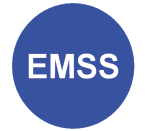Emerging Technologies for Data-Driven Pharmaceutical Supply Chain Management
- a Institute of Information Technology, Riga Technical University, Kipsalas Street 6A, Riga, LV-1048,
Cite as
Merkuryeva G. (2024). Emerging Technologies for Data-Driven Pharmaceutical Supply Chain Management. Proceedings of the 36th European Modeling & Simulation Symposium (EMSS 2024), 033. DOI: https://doi.org/10.46354/i3m.2024.emss.033
Abstract
The main challenges faced by small and mid-sized pharmaceutical companies when implementing new digital technologies in practice are analyzed. The current state of data-driven approaches in science and emerging technologies for data-driven pharmaceutical supply chain management is discussed. The opportunities and benefits of increased collaboration in pharmaceutical supply chains, including the exchange and integration of data and management information between its participants, are considered. A real-life use case for integrated demand forecasting and purchase order generation in the pharmaceutical supply chain is described. The conceptual framework of the study is presented. A demand forecasting scenario is applied using a symbolic regression model.
Pharmaceutical business intelligence | Data-driven technologies | Demand forecasting | Order planning | Pharmaceutical supply chain | Symbolic regression
References
- Angos-Mediavillaa, M., Dietrich, F., and Palm D. (2022). Review and analysis of artificial intelligence methods for demand forecasting in supply chain management. Procedia CIRP, 107: 1126–1131.
- Bilal, A.I., Bititci, U.S., and Fenta, T. G. (2014). Challenges and the way forward in demand-forecasting practices within the Ethiopian public pharmaceutical supply chain. Pharmacy, 12 (3): 86.
- Business intelligence in pharma. (2022). https://within3.com/blog/business-intelligence-pharma.
- Chopra, S., and Meindl, P. (2022). Supply Chain Management: Strategy, Planning, and Operation, EBook, Global Edition. 6th ed. Pearson.
- Cook, A.G. (2016). Forecasting for the pharmaceutical industry – models for new products and in-market forecasting and how to use them. Gower Publishing Co.: 234 p.
- Data-Driven Supply Chain Success: The Secret to Your Logistics Projects. (2024). https://www.goarmstrong.com/resources/data-and-supply-chain-projects.
- Dayal, U., Vennelakanti, R., Sharma, R., Castellanos, M., Hao, M., and Patel, C. (2008). Collaborative business intelligence: enabling collaborative decision making in enterprises. In: Meersman, R., Tari, Z., (eds): OTM 2008, Part I, LNCS, 5331: 8–25, Springer-Verlag Berlin Heidelberg.
- Hanebeck, C. (2023). Shifting Gears: Redefining Supply Chain Visibility. In: Digital Supply Chain, Disruptive Environments, and the Impact on Retailers: 179-192.
- Hawkins, L. (2022). Pharma 4.0 and the supply chain. https://www.pharmalogisticsiq.com/transportation-and-logistics/articles/pharma-40-and-the-supply-chan.
- Jain, C.L., and Malehorn, J. (2006). Benchmarking forecasting practices: A guide to improving forecasting performance. Graceway Pub Co, 128 p.
- Kaylor, A. (2023). Fundamentals of the Pharmaceutical Supply Chain. https://pharmanewsintel.com/news/fundamentals-of-the-pharmaceutical-supply-chain.
- Kronberger, G., Burlacu, B., Kommenda, M., Winkler, S.M., and Affenzeller, M. (2024). Symbolic Regression (1st ed.). Chapman and Hall/CRC.
- Lawton, G. (2022). 5 best practices for creating a data-driven supply chain. https://www.techtarget.com/searcherp/feature/Best-practices-for-creating-a-data-driven-supply chain.
- Lukas, U., and Mencer, M. (2018). A Cure for Pharmaceutical Supply Chain Complexity. https://www.pharmacompass.com/pdf/party/content/cure-for-supply-chain-complexity.pdf.
- Mandinach, E.B., Honey, M., and Light, D. (2006). A theoretical framework for data-driven decision making. An annual meeting of AERA, San Francisco. https://cct.edc.org/sites/cct.edc.org/files/publications/DataFrame_AERA06.pdf.
- McKensey. (2022). The data-driven enterprise of 2025. https://www.mckinsey.com/capabilities/quantumblack/our-insights/the-data-driven-enterprise-of-2025.
- Merkuryeva, G., Valberga, A., and Smirnov, A. (2019). A. demand forecasting in pharmaceutical supply chains: A case study. Procedia Computer Science, 149: 3-10.
- Microsoft article, 2024. Ways to collaborate and share in Power BI. https://learn.microsoft.com/en-us/power-bi/collaborate-share/service-how-to-collaborate-distribute-dashboards-reports.
- Min, H., and Yu, W-B. (2008). Collaborative planning, forecasting and replenishment: demand planning in supply chain management, Int. J. Information Technology and Management, 7 (1): 4- 18.
- Moosivand, A., Ghatari, A.R. and Rasekh H.R. (2019). Supply Chain Challenges in Pharmaceutical Manufacturing Companies: Using Qualitative System Dynamics Methodology. Iran J Pharm Res., 18(2): 1103–1116.
- Nguyen, A., Lamouri, S., Pellerin, R., Tamayo, S., and Lekens, B. (2021). Data analytics in pharmaceutical supply chains: state of the art, opportunities, and challenges. International Journal of Production Research, 60(22): 6888–6907.
- Nissi J., Smaros J., Ylinen T., Ala-Risku T. (2018) Measuring Forecast Accuracy: The Complete Guide. https://www.relexsolutions.com/measuring-forecast-accuracy.
- Patel, U. (2022). Best 3 ways how Power BI transforms Pharma companies. https://www.softwebsolutions.com/resources/power-bi-in-pharma-industry.html.
- Seyedan, M., and Mafakher, F. (2020). Predictive big data analytics for supply chain demand forecasting: methods, applications, and research opportunities. Journal of Big Data, 7: Article 53.
- The Power of Pharmaceutical Business Intelligence. (2023). https://medium.com/@pharmascroll/the-power-of-pharmaceutical-business-intelligence. PharmaScroll.
- Wagner, S., Kronberger, G., Beham, A., Affenzeller, M., et al. (2014). Architecture and design of the HeuristicLab optimization environment. Advanced Methods and Applications in Computational Intelligence, Topics in Intelligent Engineering and Informatics Series, Springer: 197-261.
- Weller, M., and Crone, S. (2012). Supply chain forecasting: Best practices and benchmarking study. Lancaster Centre for Forecasting, 41.
- Yu, W., Chavez, R., Jacobs, M.A., and Feng, M. (2017). Data-driven supply chain capabilities and performance: A resource-based view. Transportation Research. Part E: Logistics and Transportation Review, 114: 371-385.
